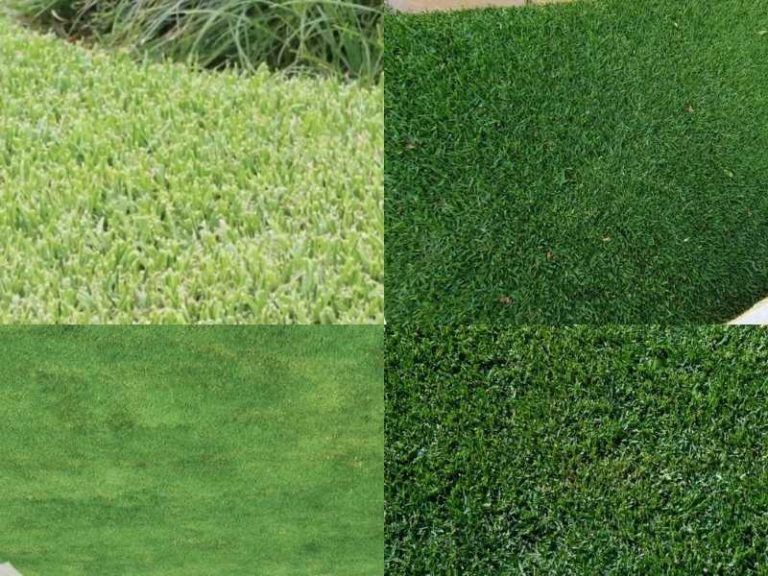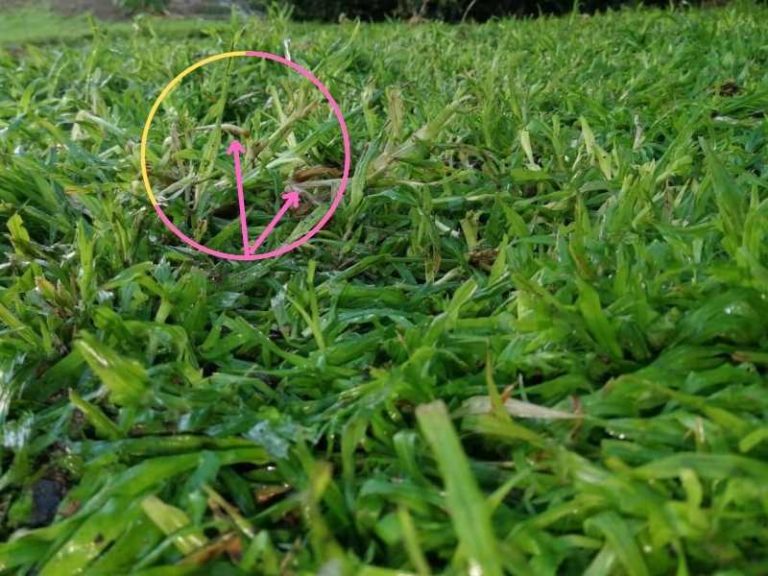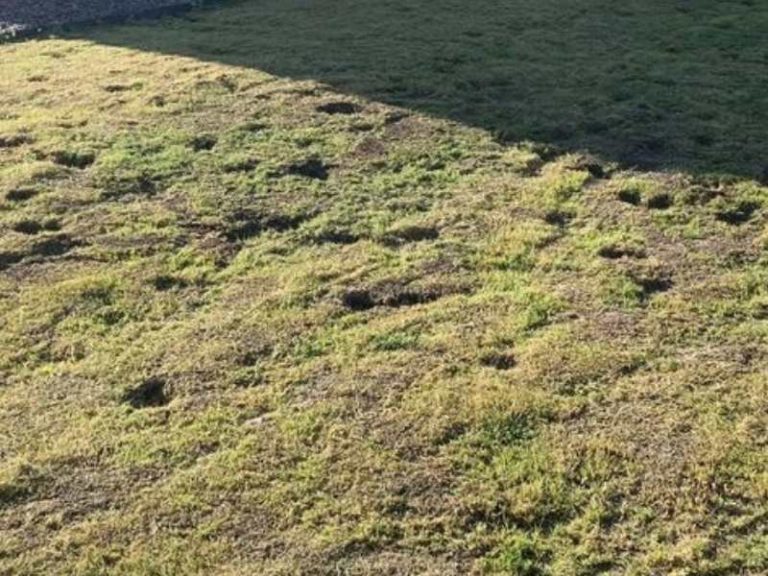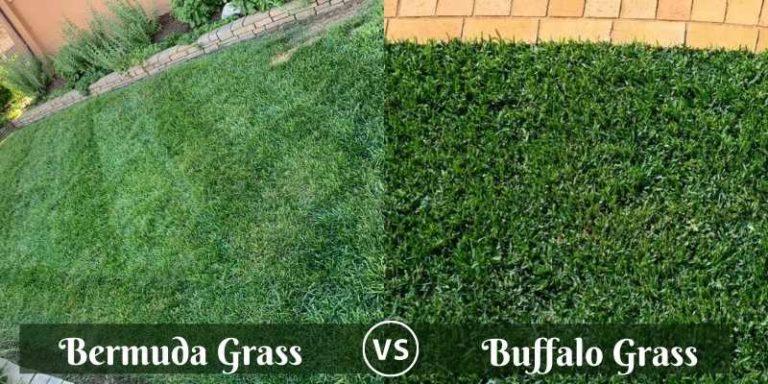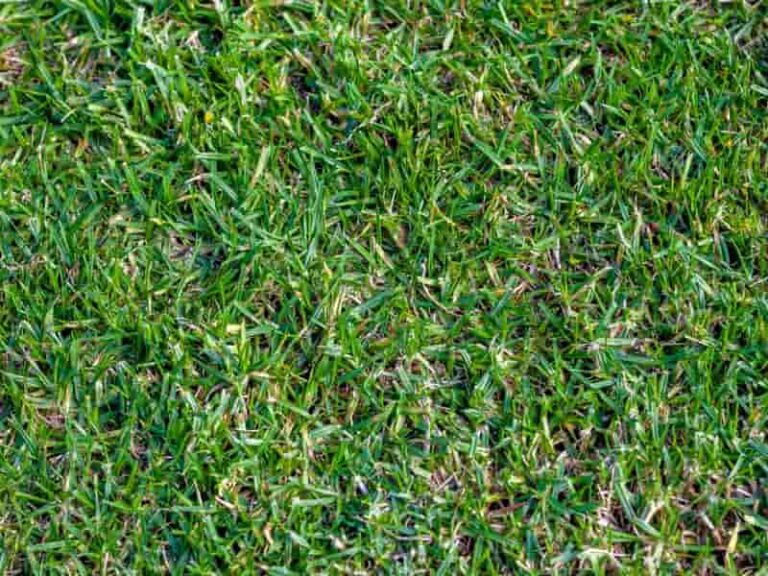How to Identify Buffalo Grass
Buffalo grass is a perennial warm-season grass. It is considered a native grass that supported the buffaloes in the great plains. It is valuable as forage grass for livestock and wildlife. Buffalo grass is also considered an excellent lawn, adds value to the ecosystem, and is vital for soil conservation. But how can I identify buffalo grass in lawns?
Buffalo (Bouteloua dactyloides) grass is a low-growing, gray-green turfgrass with wide varieties. Shademaster buffalo grass variety, for example, is dark green and has a scratchy surface. Soft Leaf buffalo grass has broad leaf blades and feels soft on the surface. Nearly all the buffalo grass varieties are low-lying, have excellent drought tolerance, and can thrive in salty soil conditions.
Buffalo grass, while highly invasive, is economical and low maintenance. I’ll highlight some unique characteristics that make it desirable as a lawn grass.
What does buffalo grass look like?
The first thing you’ll notice about buffalo grass is its vibrant green and matting effect. It is finely textured, making it a viable option for a lawn. However, its grey-green to blue-green color makes it one of the best bets as turfgrass. It spreads by stolons/runners and is low-growing at 8-10 inches high. It has extensive stolons that produce dense sod with short 2-3 inch internodes and nodes with tufts of short rolled leaves.
Some varieties have scratchy upper and lower surfaces due to the hairs on the leaves. You’ll also notice the root and produce new shoots at the internodes.
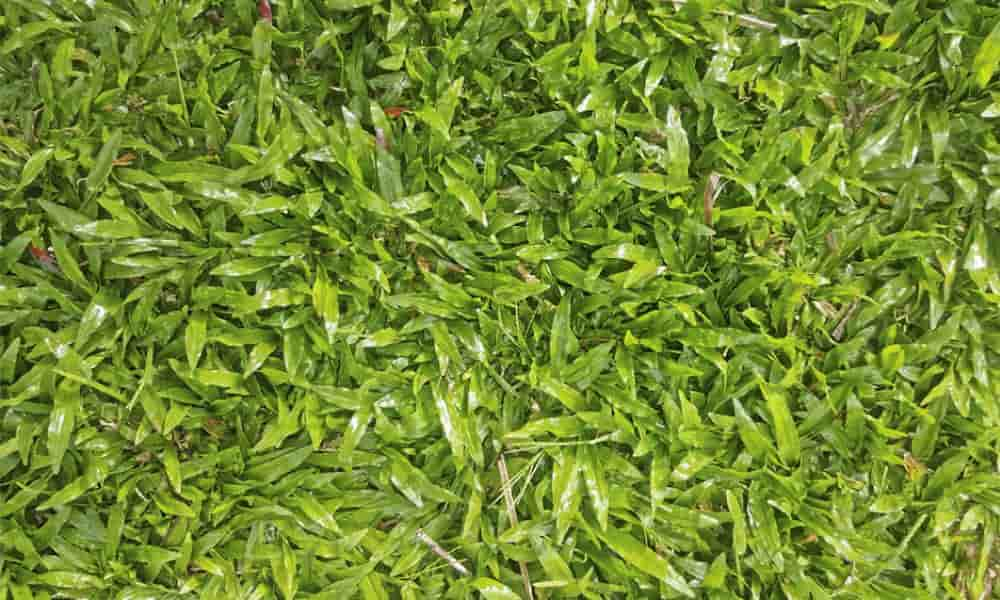
Different cultivars have different looks. Older cultivars are coarse, while improved cultivars such as Prestige and Palmetto cultivars are finer.
Buffalograss is dioecious. The plants are either female or male. The female flowers are hidden in a bud, while the male flowers are visible. The blooming season is the best time to identify this flowering difference. It is most commonly found in the central and southern United States lawns.
How do I identify Buffalo Grass?
The best way to identify buffalo grass is by looking at its color, leaf blades, and runners. However, since every variety is different, you can use texture to identify Buffalo grass.
Here are more characteristics that will help you accurately identify Buffalo grass:
Description
The most standout feature of Buffalo grass is its soft blue-green color and thin leaves. Buffalo grass spreads by stolons and seeds and has no rhizomes. Buffalo grassroots are fine-textured, reaching approximately 24-45 inches underground. Its rooting system makes removing from flower beds and pathways easy.
Establishment
Buffalo grass can be established from seed or sod. The seeds often have a tough enclosing the embryo, limiting the germination rate to a dismal 20%. However, the seeds are treated chemically or chilled to break the dormancy before planting.
A soil analysis test should be performed to determine Nitrogen, Potassium, and Phosphorus levels. Plant the seeds from April to July when the soil has adequate moisture. The seeds will germinate after a period of 6-10 days. Correct fertilization and irrigation improve the establishment rate. It takes approximately 2 or more years for Buffalo grass to establish fully.
Adaptation
Buffalo is ideal lawn grass. It tolerates drought, heat, and cold with minimum care better than Kentucky bluegrass, Bentgrass, and Bermuda grass.
You’ll find Buffalo grass in well-drained loamy soils. Still, it also thrives in clay soils. It does not thrive in sandy soils and poorly drained soils.
Most Buffalo grass varieties are unsuitable for shaded areas. Buffalo grass requires about 6-8 hours of sunlight a day. Others like Shademaster are well-adapted to shade.
You are less likely to find Buffalo grass in humid areas. The grass is native to the hot climate of New Mexico and Montana. It would struggle in areas like the Mid-Atlantic.
Buffalo grass isn’t adapted to highly saline soils. Still, it shows moderate tolerance in slightly saline conditions compared to other native grass species, such as gamagrass and switch grass.
You’ll find Buffalo grass in alkaline soils with pH 6.5-8.0. However, they tend to do poorly in aluminum-rich soils.
Because of its low-growing habit, it can withstand heavy grazing and close mowing. However, overgrazing, excessive traffic, and scalping might have irreversibly damaging effects.
Use
Buffalo grass’s low-growing, sod-forming habit is well-suited for roadsides, golf courses, parks, and open lawn areas. It is also used in small airfields and flight strips. Cemeteries are a prime setting if you want to identify Buffalo grass.
Because of its appearance, it is mostly used as prairie grass, forage grass, and coverage in the great plains and the hillside. It is considered a good quality forage grass for livestock. In the wild, wildlife such as white-tailed deer, prairie dogs, and jackrabbits enjoy it as fodder.
Buffalo grass is also used for soil conservation. It controls runoff and wind erosion, especially in sloppy areas. This is because of its soil-binding ability and water-holding capacity.
Maintenance
Buffalo grass is a low-maintenance turfgrass. Irrigation is one of the vital parts of its maintenance. It does better when it’s irrigated in the summer. Deep irrigation up to 3 inches deep boosts its roots and stolon growth. Also, it keeps the grass from going dormant.
Excess irrigation and fertilization promote encroachment by weeds. Buffalo grass is prone to invasion by weeds such as Broadleaf, pear cactus, or field bindweed. The application of effective herbicides such as Glyphosate is recommended in such cases.
Grass that is infected with fungal diseases changes its appearance. The grass will change color or have lesions on the leaves. Several diseases and insects affect buffalo grass. These diseases include; False Smut, Leaf Blotch, Leaf Rust, and Witches Broom. Other pests and insects include nematodes, grasshoppers, June Beetle, and Prairie Ants. Fortunately, the actual death of the grass from the diseases is rare, but it affects its quality.
What are the characteristics of buffalo grass?
In certain circumstances, Buffalo grass can serve as an excellent lawn. You should consider these adaptations of Buffalo grass before planting it on your lawn, roadside, or park.
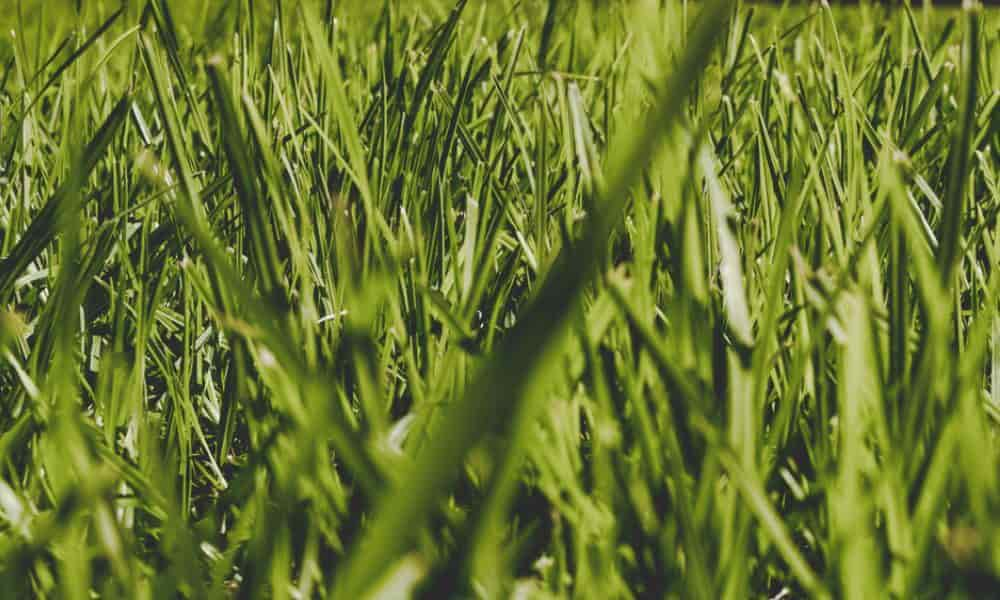
- It has good drought and heat tolerance. During drought, the leaf rolling habit and deep roots enable it to revive after dormancy.
- It is low maintenance. It requires low fertilization, little mowing, and infrequent watering.
- It thrives in acidic soils. Buffalo grass is adapted to a soil pH of 6.0 to 8.0.
- Once established and in good condition, Buffalo grass outcompetes weeds. However, Buffalo grass will be encroached on by weeds if overmanaged.
- It is not winter resistant. Buffalo grass discolors and becomes dormant during the winter season. The grass does not retain its color when the temperatures drop until the cold season is over.
- Although it is drought tolerant, without proper irrigation in the dry summers. Buffalo grass will go dormant due to a lack of rain or irrigation.
- Not able to withstand shade. It does not thrive under trees and buildings. Buffalo grass needs about 6-8 hours of direct sunlight per day.
- Establishing Buffalo grass can be expensive. Seeds and sods are relatively costly compared to Kentucky Bluegrass, Fescues, and Perennial Ryegrass.
- Buffalo grass is an inferior competitor when overseeded with Kikuyu grass or Bermuda grass. These species can easily overtake it because of its slow growing-habit.
How do I know which grass variety I need?
There has been forward progressing to domesticate Buffalo grass. Newer variations have increased forage production, disease resistance, and turf quality. Your choice of variety depends on these factors. But how do I tell what grass I have?
Old cultivars are difficult to establish, expensive, coarse, and therefore unpopular. Newly developed cultivars are more attractive, have darker green, and can resist weeds.
Here are the currently available improved types of buffalo grass:
- Seeded cultivars: These varieties include; Bison, Bowie, Topgun, Cody, Plains, Texoca, and ‘Sharp’s improved’. Seeds are less expensive and easy to plant than vegetative methods. Seeds take about 2 years to establish a longer lawn than sods fully.
- Vegetative cultivars: They include; Prairie, 609, Legacy, prestige, Density, UC-Verde, 378 Turffalo. They are available as either sods or plugs. They make an attractive turf but are more expensive to establish than seeds. Legacy Prestige and Turffalo tolerate winter temperatures, while Prairie and 609 can go dormant in cold seasons. Texoca and Sharp are improved varieties that can be used for pasture or vegetative rangeland. They are, however, considered unattractive and not preferable for lawns.
- Stampede: This is a semi-dwarf variety that spreads rapidly. It is also dense and grows to about 4 inches high.
Note: Finding all desirable traits in one cultivar is difficult. However, some varieties exhibit better performance than others. Sapphire is one of the best cultivars. It has great drought tolerance and bounces back after the cold season. It is also able to recover from wear and traffic damage. What makes Sapphire Buffalo grass better than other varieties is its fine texture.
Buffalo grass pictures
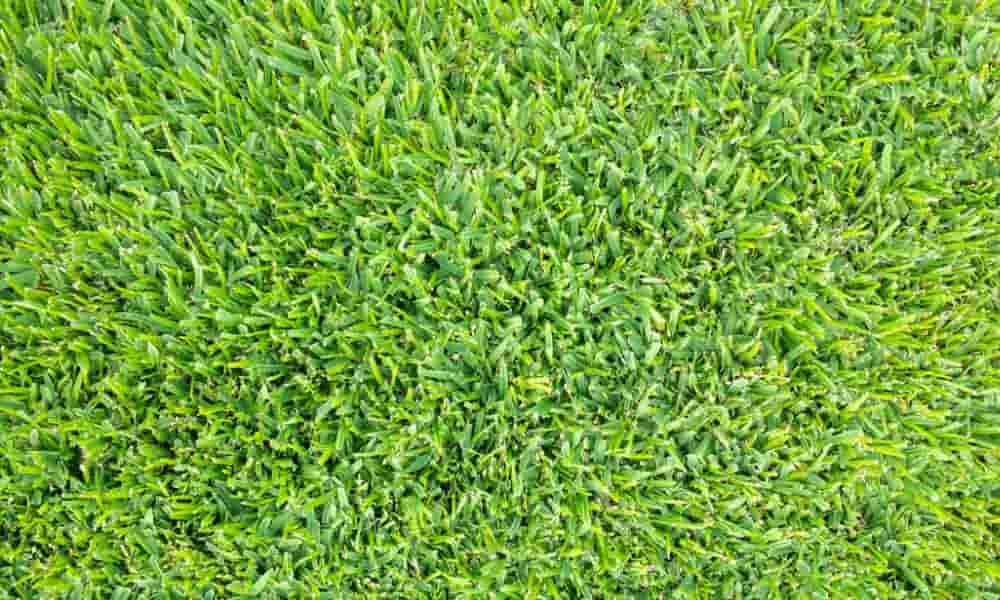
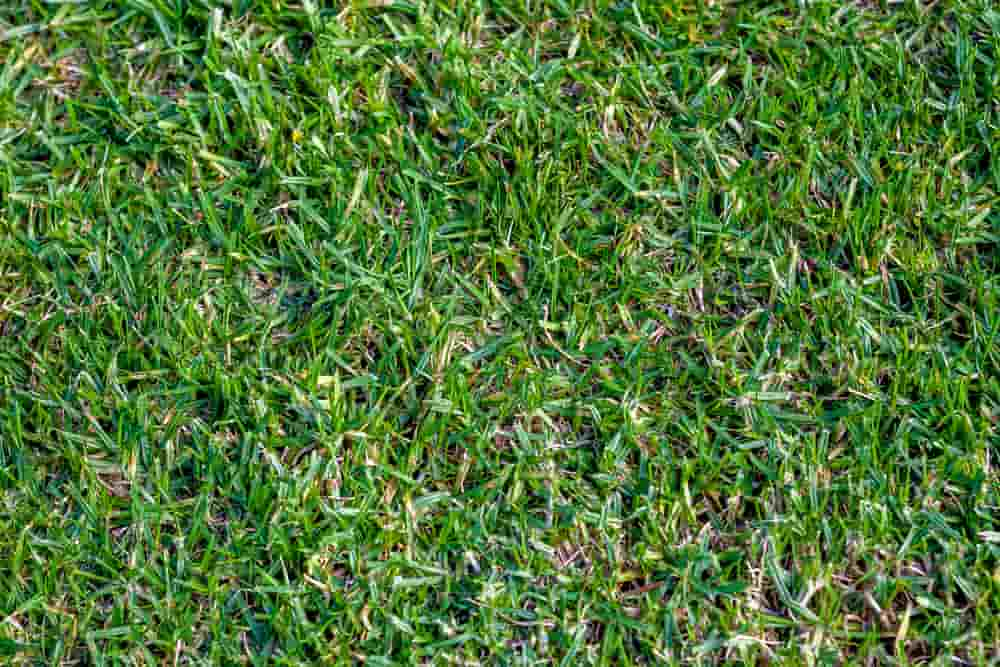
References
- Colorado State University|Extension; Buffalograss
- USDA: Botanical and ecological characteristics of Buffalograss
- Arizona Cooperative Extension: Bouteloua dactyloides – buffalograss


